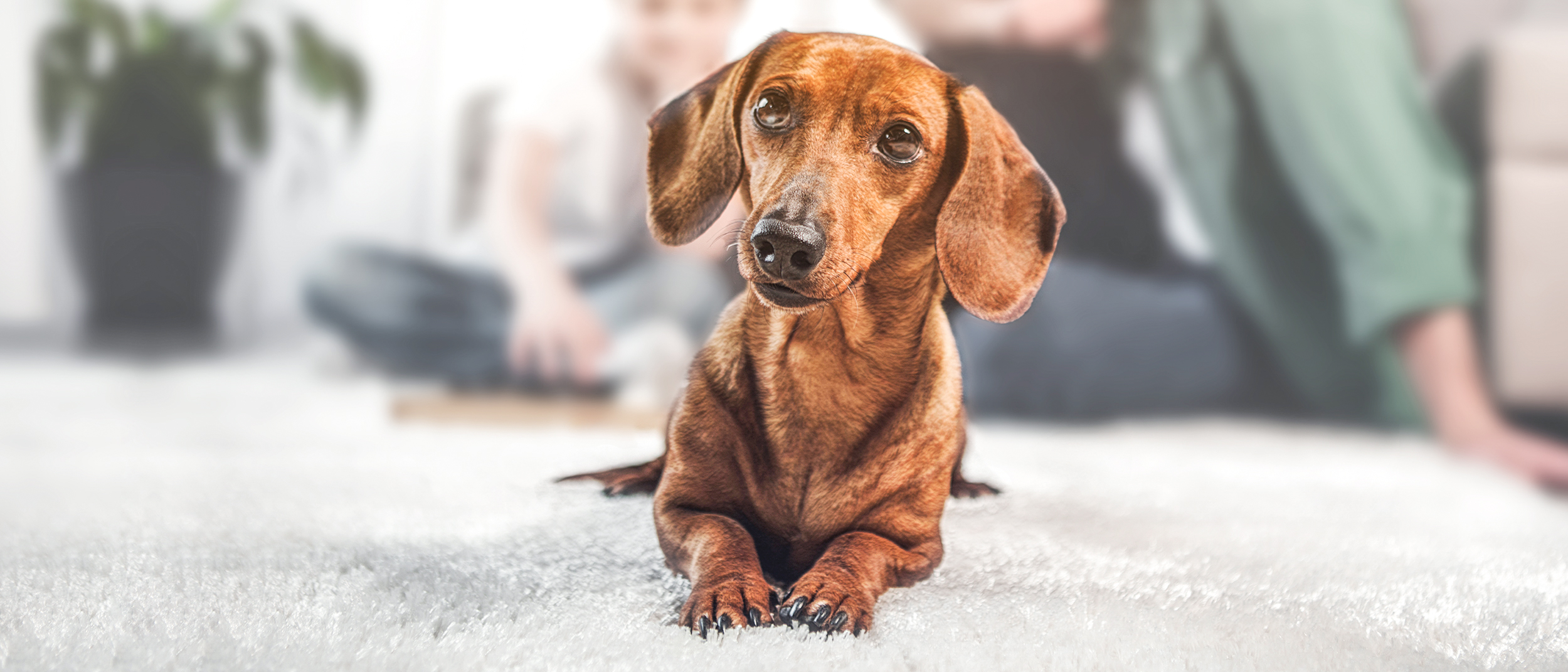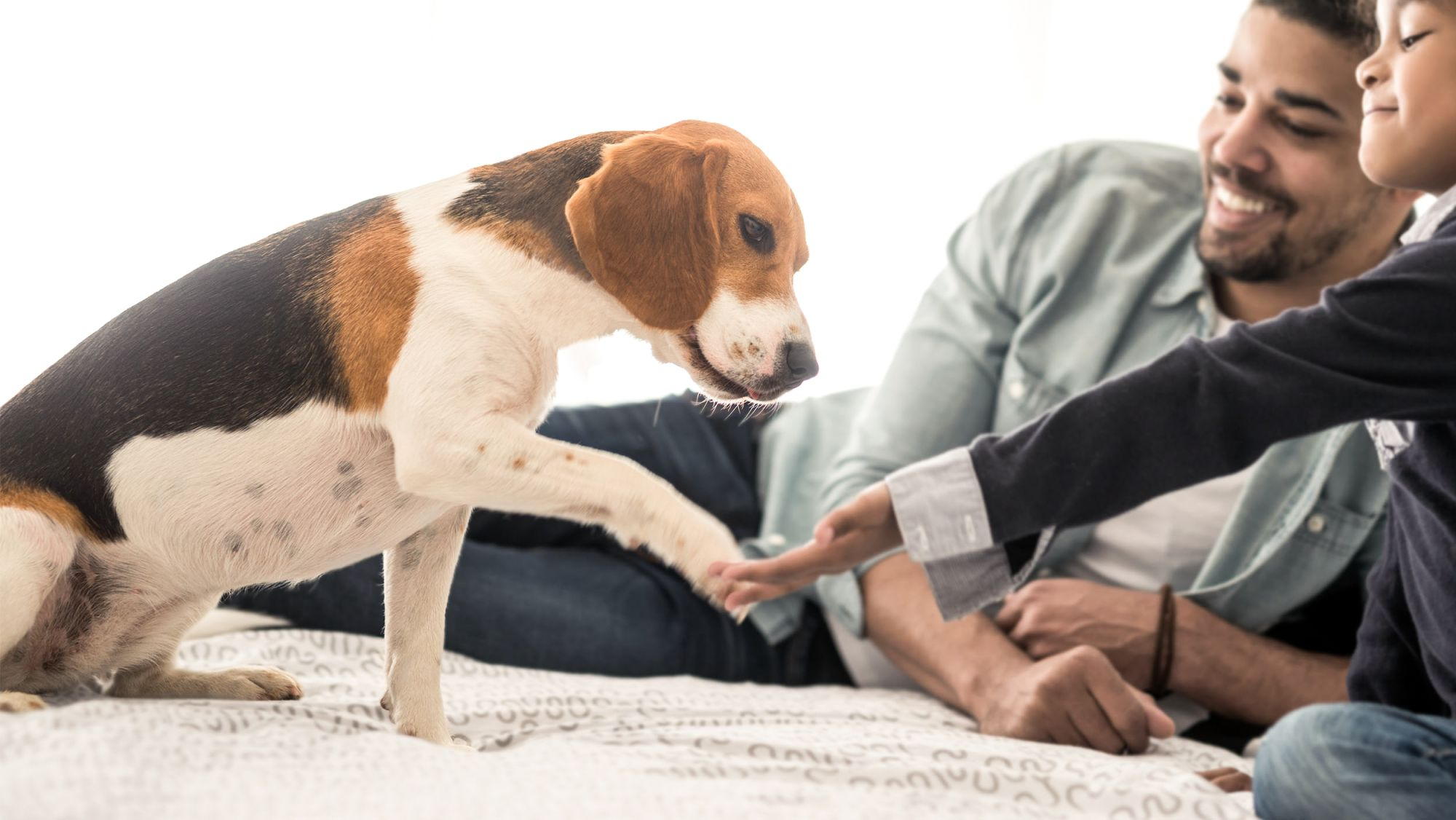The best family-friendly dog breeds
Article

Educating your children
Getting a puppy is an extremely exciting time for children, but it's important to explain that their new pet is not a toy and that they need to be careful with their new companion. Introductions can be daunting for a young puppy and negative experiences will have a lasting effect. The socialization period starts from four weeks and goes up to fourteen weeks and any trauma occurring during this time may have lasting consequences. Therefore, it’s important that when you socialize your puppy, the environment is quiet, relaxed and children are encouraged to be calm.To support the process you can:
Ask children to sit on the floor and let the puppy to come to them first.
Teach children that the best way to handle their new pet is by supporting their bodies carefully if they pick them up. The best way is to place one open hand under their tummy and support the rear end with the other hand.
When children do cuddle the puppy, make sure that they don’t hold them too tightly.
Ensuring your puppy and children are safe
There are a number of things that will help to keep both your puppy and children safe as they grow up together. By reminding children that they have a role to play in their puppy’s development and safety, they can learn to take some responsibility.
To avoid any biting or scratches, teach your child:
Not to disturb the puppy when they are sleeping or eating.
Not to look them straight in the eyes.
Not to hold them too tightly in their arms.
Not to give them any food from the table.
Children younger than 10 should not be left alone with the puppy; an adult should always be present when children and puppies play together.

Dog breeds that are good with children
Choosing a breed of dog will be influenced by a number of factors including your lifestyle. Certain breeds are known for particular character and behavior traits, including their suitability for children, which will also play a part in your decision making process. However, all animals have their own temperaments so this cannot be used as a definitive guideline.
Breeds of dog can be defined as small, medium, large, and giant, but just because a dog is small does not necessarily mean it is easier to look after. It is a good idea to consider the general temperament of a breed, as well as its size and energy levels. If you have children with allergies you may also be looking for a hypo-allergenic breed.
Some of the most popular, family-friendly dog breeds include:
Golden Retriever: Confident, smart, kind, loyal, and patient, Retrievers love playing with children, but they do need lots of exercise and outdoor space.
Labrador Retrievers: Known for their sweet temperaments, Golden Retrievers have been among the most popular dog breeds for decades. They need a lot of exercise to prevent weight gain.
Bulldogs: For those looking for a less energetic dog, Bulldogs are loyal and relaxed making them calm companions for families.
Beagles: A breed that thrives on companionship, Beagles are known for their friendly and lovable nature.
Havanese: Extremely loving, Havanese are playful, even-tempered little dogs who are known to be incredibly gentle with children by nature.
Poodles: A hypo-allergenic breed, poodles come in large and miniature sizes and are highly intelligent dogs. They tend to be obedient and responsive, but they do require a lot of grooming.
Dogs can be extremely loving and nurturing members of the family providing great companionship for children. By educating children in the needs of their new pet and their responsibility to care for their dog from the beginning, you will maximize the opportunity to create a happy and safe environment for both your new dog and your children.
Like & share this page